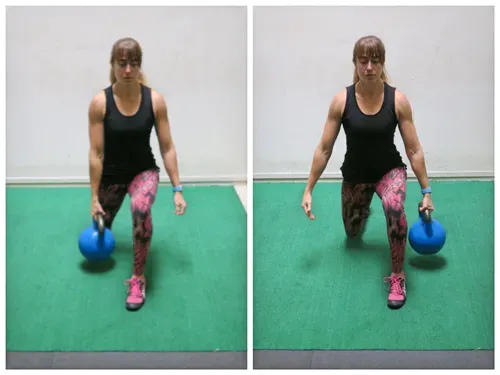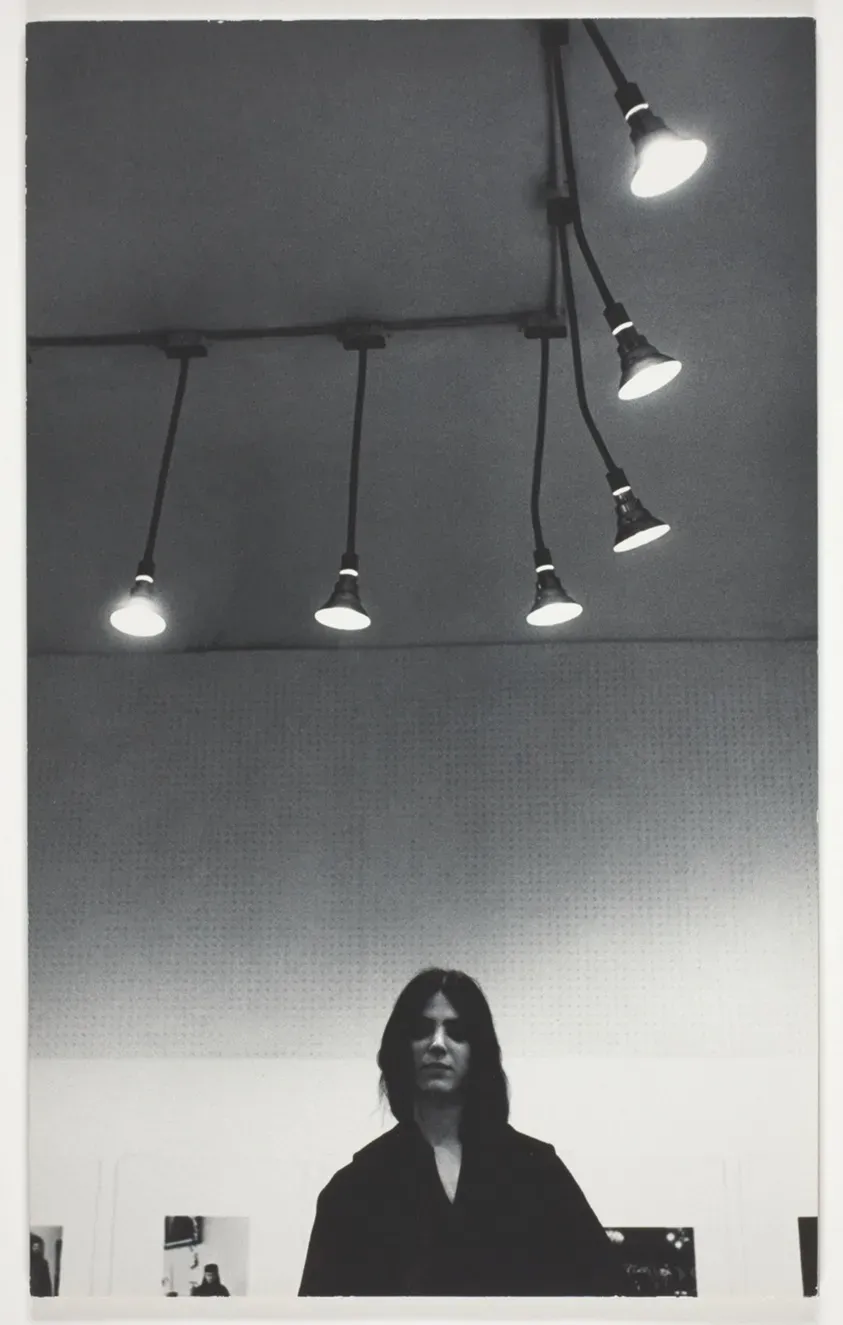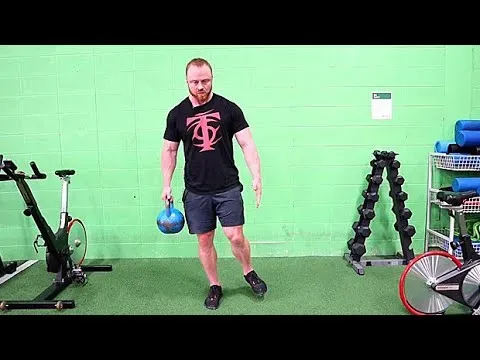Table of Contents
Introduction
Let's talk core strength. Not just those mirror muscles, but the kind that actually helps you move better, lift heavier, and maybe even stand a little taller. Forget endless crunches that seem to do nothing. There's an exercise that hits your core from angles you might not expect, while also challenging your coordination. It's called the kettlebell under leg pass, and if it's not in your routine, you might be missing out. This isn't some secret ancient technique, but it's often overlooked in favor of more complicated moves or the same old standby exercises. Mastering the kettlebell under leg pass can seriously upgrade your functional fitness. In this guide, we'll walk you through exactly how to perform this exercise correctly. We'll cover the common slip-ups people make and how to steer clear of them. You'll also understand why this movement is so effective and how to make it harder as you get stronger. Consider this your straightforward, no-nonsense breakdown of the kettlebell under leg pass. Get ready to build a more stable and powerful core.
Unlock Core Power with the Kettlebell Under Leg Pass

Unlock Core Power with the Kettlebell Under Leg Pass
Alright, let's cut to the chase about building a solid core. If you're tired of doing the same old planks and crunches and feeling like you're hitting a plateau, the kettlebell under leg pass is your next move. This exercise isn't just about moving a weight around; it's a dynamic challenge that forces your entire core – your abs, obliques, and lower back – to work together to stabilize your body while your limbs are in motion. Think of it less like a static hold and more like controlled chaos for your midsection, demanding coordination and strength simultaneously. It targets those deep stabilizer muscles that often get ignored, leading to a more resilient and functional core that's ready for real-world demands, not just looking good in the mirror.
How to Nail the Kettlebell Under Leg Pass: StepbyStep

How to Nail the Kettlebell Under Leg Pass: StepbyStep
Starting Position is Everything
so you've got your kettlebell. Don't grab the biggest one you can find right away; start light to get the form down. Trust me, your ego will thank you later. Stand with your feet roughly hip-width apart, maybe slightly wider if that feels more stable for you. Hold the kettlebell in one hand, letting it hang naturally at your side. Keep your shoulders back and down, chest slightly lifted. Your core needs to be engaged – think about bracing like someone's about to poke you in the stomach. This isn't a floppy noodle exercise; stability from the ground up is key for the kettlebell under leg pass.
Executing the Pass with Control
Now for the action. Slightly bend your knees and hinge at your hips, like you're about to sit back into a chair, but keep your back straight. As you lower the kettlebell towards the floor, swing it between your legs. As it swings back up, pass it smoothly to your other hand behind your leg. Stand back up fully, bringing the kettlebell with you on the opposite side. That's one rep on one side. You'll immediately transition into the same motion, swinging the kettlebell back between your legs to pass it back to the original hand behind the *other* leg. The movement should be fluid, almost like a controlled pendulum swing, but the power comes from your hips and core, not just momentum.
- Choose a manageable weight first.
- Stand feet hip-width apart, core braced.
- Hinge at hips, slight knee bend.
- Swing kettlebell between legs.
- Pass kettlebell behind the leg to the other hand.
- Stand tall, receiving kettlebell on the opposite side.
- Repeat, passing back the other way.
- Focus on smooth, controlled movement.
Avoid These Pitfalls: Common Kettlebell Under Leg Pass Mistakes

Avoid These Pitfalls: Common Kettlebell Under Leg Pass Mistakes
Don't Turn into a Quasimodo
seriously, the most frequent offense I see with the kettlebell under leg pass is people rounding their backs. They hinge, sure, but instead of keeping a straight spine like they're proud of their posture, they curl up like a scared cat. This isn't just ugly; it's dangerous. Your lower back is not designed to handle load in that rounded position. You're asking for pain and potential injury. The whole point of the hinge is to use your powerful hip muscles and keep your spine neutral and protected. Think of it like a deadlift setup, just with a swing. Keep that chest up, shoulders back, and focus on pushing your hips backward, not just bending over.
Stop Relying on Momentum Alone
Another classic blunder? Letting the kettlebell just swing wildly like a wrecking ball and using that momentum to fling it between your legs. The kettlebell under leg pass isn't about how fast you can whip the weight around. It's about *controlling* that swing. If the weight is pulling you off balance or you have to contort your body to catch it, the kettlebell is too heavy or you're not engaging your core properly. Your core should be the engine controlling the swing, not just a passenger along for the ride. Slow it down, focus on the hip hinge initiating the movement, and keep your midsection locked tight throughout the pass.
- Mistake: Rounding your back during the hinge.
- Correction: Maintain a straight spine, chest up, hinge at hips.
- Mistake: Using excessive momentum, losing control of the swing.
- Correction: Use a lighter weight, focus on hip hinge and core control.
- Mistake: Not bracing the core.
- Correction: Engage your abs and lower back throughout the entire movement.
Why Add the Kettlebell Under Leg Pass to Your Routine?

Why Add the Kettlebell Under Leg Pass to Your Routine?
More Than Just Abs: Integrated Core Work
Look, everyone wants visible abs, but a truly strong core is about way more than just the six-pack. The kettlebell under leg pass forces your entire midsection – from your diaphragm down to your pelvic floor – to work together dynamically. As you swing the weight and pass it behind your leg, your obliques fight rotation, your rectus abdominis (the six-pack muscle) stabilizes against flexion, and your lower back muscles keep your spine neutral. It's not just static bracing; it's active stabilization under load while your limbs are moving. This translates directly to better performance in other lifts, improved posture, and less likelihood of tweaking something when you bend over to pick up groceries or wrestle a rogue dog leash. It teaches your core to work the way it's supposed to in real life – as a unified unit.
Build Functional Strength and Hip Power
Beyond just the core, the kettlebell under leg pass is a fantastic way to drill your hip hinge. Remember how we talked about hinging at the hips, not rounding your back? This exercise reinforces that fundamental movement pattern, which is crucial for everything from deadlifts and swings to simply lifting heavy things off the floor safely. The slight pendulum motion, controlled by your hips and core, builds power and coordination in that hinge. It's a functional movement that translates to better athleticism and everyday strength. Plus, the constant need to pass the weight smoothly between hands requires focus and coordination, improving your body awareness and control under load.
- Engages entire core dynamically.
- Improves rotational stability (obliques).
- Reinforces proper hip hinge mechanics.
- Builds coordination and body awareness.
- Translates to better performance in lifts and daily tasks.
Taking Your Kettlebell Under Leg Pass Further: Progressions

Taking Your Kettlebell Under Leg Pass Further: Progressions
Increase the Load, Smartly
so you've nailed the basic kettlebell under leg pass with a weight that feels comfortable. You're moving smoothly, your back isn't rounding, and you feel your core working like it should. Great. The most obvious way to make this harder is to grab a heavier kettlebell. Simple, right? But don't just jump five sizes up. Go up gradually. Maybe just one size heavier. Pay close attention to your form. Can you still maintain that straight back throughout the hinge? Is your core still controlling the swing, or is the weight pulling you around? If your form breaks down, you went too heavy. There's no prize for using a weight you can't handle properly. The goal is progressive overload, yes, but not at the expense of the movement quality that makes the kettlebell under leg pass effective in the first place.
Pump Up the Volume or Speed
Weight isn't the only lever you can pull. Once a certain weight feels easy for, say, 10-12 reps per side, you can increase the number of reps you do in a set, or add more sets to your workout. More time under tension equals a greater challenge. Another way to progress, once you have *perfect* control with a moderate weight, is to increase the tempo slightly. This isn't permission to go wild and use momentum. It means performing the pass with a bit more speed, requiring your core to work harder and faster to stabilize against the quicker movement of the weight. Think snappy and controlled, not sloppy and fast. This ups the anti on your reactive core strength.
So, how do you make this move harder without just grabbing the biggest kettlebell you can find?
- Gradually increase kettlebell weight (check form!).
- Increase reps per set or total sets.
- Increase tempo (while maintaining control).
- Reduce rest time between sets.
- Combine with other movements (see next point).
Add Complexity and Combos
Feeling really confident with the kettlebell under leg pass? You can start layering in other movements. One common progression is to combine it with a squat. Perform the under leg pass as you lower into a squat, standing up as you complete the pass to the other hand. This adds a significant lower body challenge while requiring even more coordination and core stability to manage the weight's movement during the squat. You could also try adding a slight rotation or integrating it into flow sequences. Just remember, each added layer means more potential for form breakdown. Master the foundation before you start building the complex structure. The goal is always controlled, powerful movement, not just doing fancy tricks with a kettlebell.
Mastering the Pass: Your Core's New Best Friend
So there you have it. The kettlebell under leg pass isn't just another move to throw into the mix randomly. Done right, it's a focused way to challenge your core stability, improve your coordination, and build strength that actually translates to real-world movements. It takes a bit of practice, maybe even a few awkward moments dropping the bell (we've all been there), but sticking with it pays off. A stronger core isn't just about aesthetics; it's the foundation for just about everything you do, inside and outside the gym. Add the kettlebell under leg pass to your routine, pay attention to the details, and notice the difference it makes.